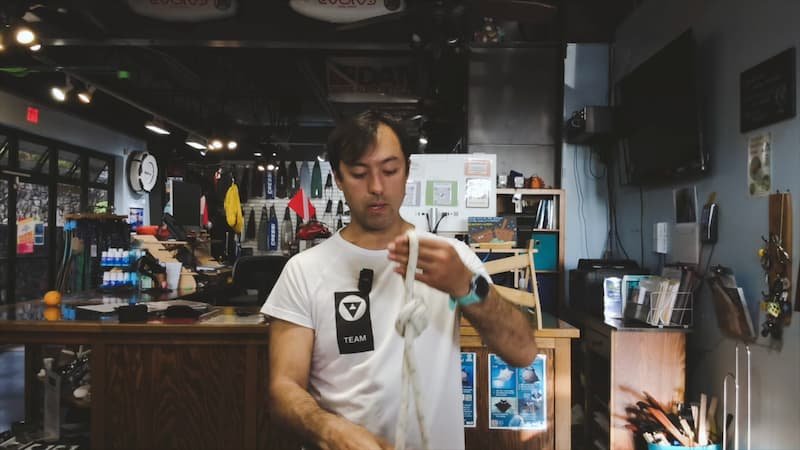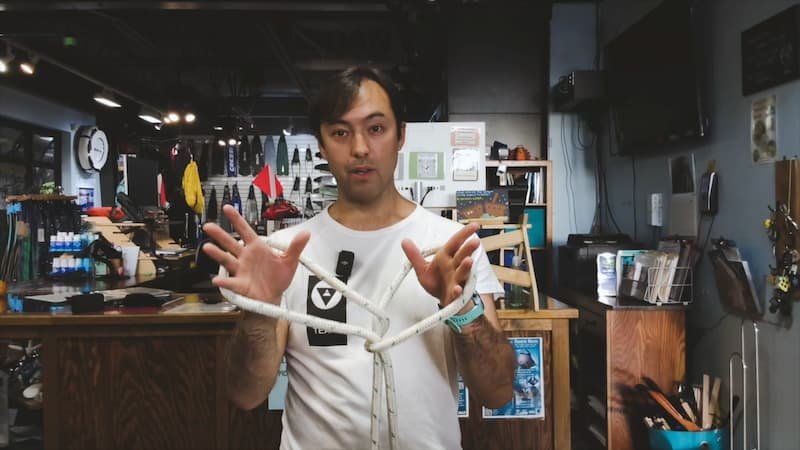
 Nick Pelios
Freediver, Creator
Nick Pelios
Freediver, Creator

 Nick Pelios
Freediver, Creator
Nick Pelios
Freediver, Creator
If you’ve ever pulled up your freediving rope and found a knotted mess, you know how much time and patience it can burn. Before you even clip your lanyard or check your setup, you’re already stuck dealing with line chaos. That’s time lost, energy wasted, and momentum interrupted.
This is exactly what freediving instructor Chris Funada addresses in our new Complete Guide video "How To Daisy Chain Your Dive Rope For Freediving". Based on the Big Island of Hawaii, Chris walks through a method that solves a surprisingly common problem among divers who use long ropes.
Chris explains that daisy chaining is more than just a clever knot trick. It helps streamline your entire pre-dive routine. No more scrambling to untangle your line or fumbling with a twisted rope in the water. You pull it out, it's tidy, and you're ready to dive.
It’s not just about aesthetics. A clean setup shows professionalism and preparedness. It also means less wear and tear on your rope, fewer chances of snagging, and a lot more efficiency during setup and breakdown.

When you daisy chain correctly, a 20-meter rope can be reduced to about 6 meters. That’s a huge space saver, especially if you're working off a small boat, sharing gear with others, or carrying multiple lines for a class or training session.
The best part? It unravels almost instantly. Chris demonstrates that if you’ve chained the rope properly, a single pull will undo the entire length without any tangles. No knots to pick at. No twisting or pulling. Just one clean motion and you’re in business.
Once you get the hang of the basic method, Chris introduces the double daisy. This advanced version is even more compact. In his example, a 20-meter rope becomes just 3.3 meters long. It’s ideal for travel, storage, or anyone who wants to keep gear as tight and organized as possible.

The technique starts the same way but splits into two loops that fold back into themselves. It might take a little more time to learn, but once you’ve got it, it becomes second nature.
Freediving is built on discipline, efficiency, and respect for the environment you’re moving through. Details matter. A tangled rope isn’t just a minor inconvenience. It’s a sign that something in your process isn’t dialed in.
Chris’s tutorial is a reminder that the best divers don’t just think about their breath-hold or depth. They think about every step that leads them there. Line management is part of the craft, and daisy chaining your rope is one of the simplest ways to keep things clean, fast, and focused.